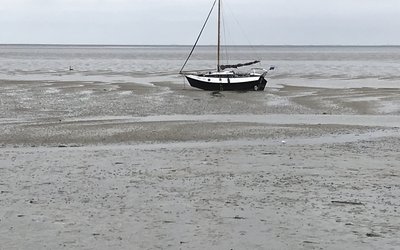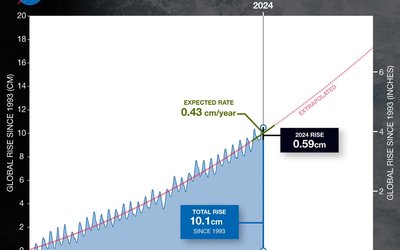
A detailed analysis of twenty first century regional sea-level changes for Norway has been carried out by accounting for spatial variations in (1) ocean density (due to variations in temperature and salinity) and circulation (2) ice and ocean mass changes and associated gravitational effects on sea level and (3) vertical land motion arising from past surface loading change and associated gravitational effects on sea level.
An important component of past and present sea-level change in Norway is glacial isostatic adjustment: the Earth’s viscous relaxation in response to ice mass loss over the past 10,000 years. Uplift rates along the Norwegian coast are between 1 and 5 mm/year (or between -0.1 and -0.5 m as a contribution to twenty-first century relative sea-level change).
Projected twenty-first century sea-level changes in Norway are below the global mean: the projected relative sea-level changes in Norway for the period 2090–2099 relative to 1980–1999, based on the emission scenarios A2, A1B and B1, vary between -0.2 to 0.3 m (1-sigma ± 0.13 m). These changes are between -40 and 60 % of the projected global mean (0.47 m).
The projected relative sea-level changes for Norway based on a high-end scenario of 6°C global warming and an emerging collapse for some areas of the Antarctic ice sheets vary between 0.25 and 0.85 m (min/max ± 0.45 m). These changes are between 25 and 95 % of the projected central estimate of the global mean (0.91 m). For this high-end scenario, ocean surface increases dominate over the land uplift signal across all of Norway. The pattern of relative sea-level changes, however, still largely reflects land motion due to glacial isostatic adjustment.
Source: Simpson et al., 2014. Climate Dynamics 42: 1405–1424
Photo: Patrick Nouhailler (www.flickr.com)








